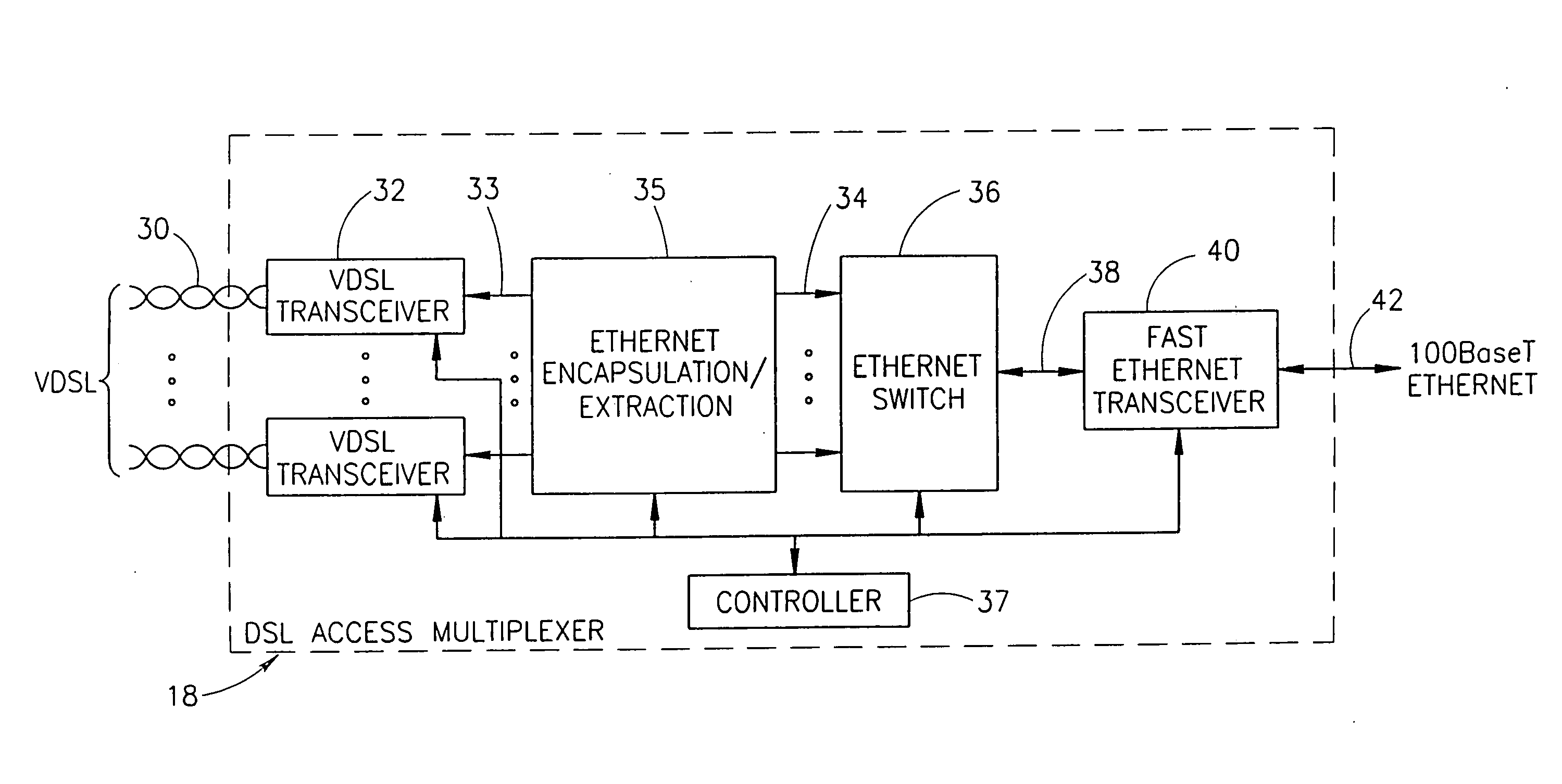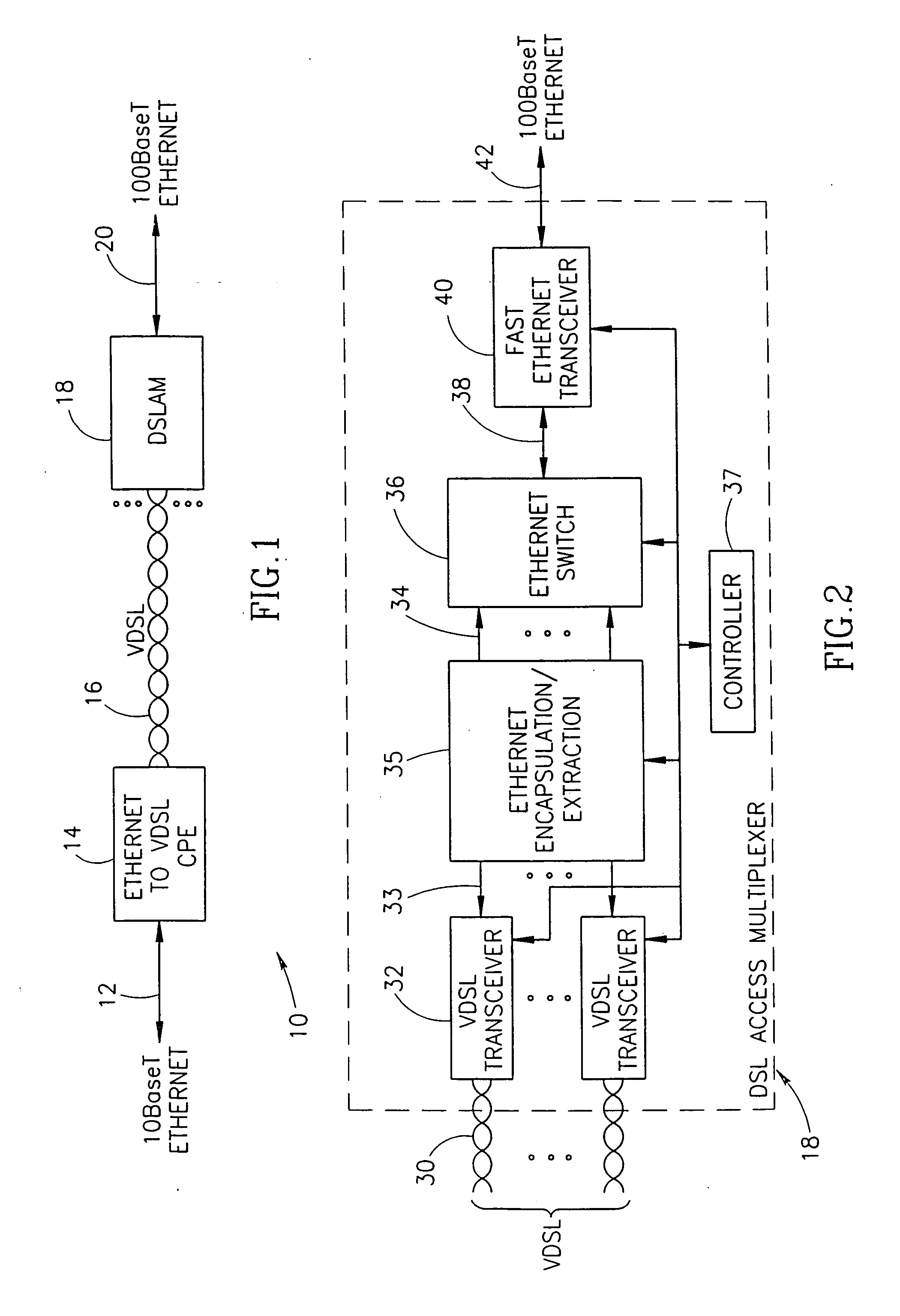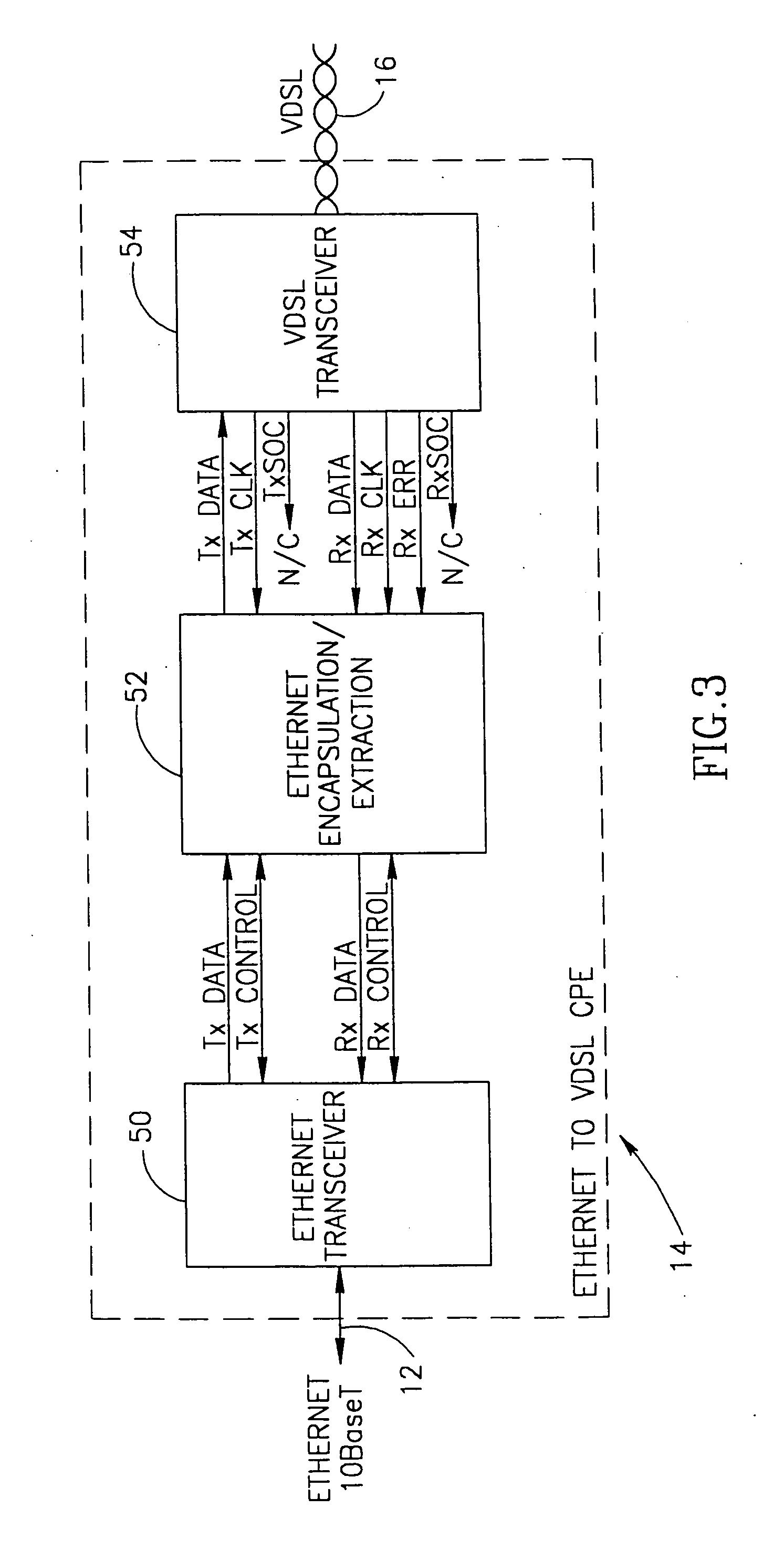System for transporting Ethernet frames over very high speed digital subscriber lines
a technology of ethernet frames and digital subscriber lines, applied in the field of data communication systems, can solve the problems of high bandwidth consumption, inability to access high speed data networks, and millions of personal computers in the home mark
- Summary
- Abstract
- Description
- Claims
- Application Information
AI Technical Summary
Problems solved by technology
Method used
Image
Examples
Embodiment Construction
Notation Used Throughout
[0045] The following notation is used throughout this document.
TermDefinitionADSLAsymmetric Digital Subscriber LineANSIAmerican National Standards InstituteCADComputer Aided DesignCAPCarrierless Amplitude Modulation / Phase ModulationCPECustomer Premise EquipmentCRCCyclic Redundancy CheckDBSDirect Broadcast SatelliteDSLDigital Subscriber LoopDSLAMDigital Subscriber Line Access MultiplexorEDIEthernet Data inEDOEthernet Data OutEEEEthernet Encapsulation / ExtractionEIEthernet InEOEthernet OutEOFEnd Of FrameETSIEuropean Telecommunications Standards InstituteFDMFrequency Division MultiplexingFEXTFar End Crosstalk FIFO First In First OutFTTBFiber to the BuildingFTTCFiber to the CurbFTTCabFiber to the CabinetFTTExFiber to the ExchangeFTTHFiber to the HomeFTTNFiber to the NodeHFCHybrid Fiber CoaxIFGInterframe GapISDNIntegrated Services Digital NetworkMMDSMultichannel Multipoint Distribution ServiceMPEGMotion Picture Entertainment GroupNEXTNear End CrosstalkONUOptical...
PUM
 Login to View More
Login to View More Abstract
Description
Claims
Application Information
 Login to View More
Login to View More - R&D
- Intellectual Property
- Life Sciences
- Materials
- Tech Scout
- Unparalleled Data Quality
- Higher Quality Content
- 60% Fewer Hallucinations
Browse by: Latest US Patents, China's latest patents, Technical Efficacy Thesaurus, Application Domain, Technology Topic, Popular Technical Reports.
© 2025 PatSnap. All rights reserved.Legal|Privacy policy|Modern Slavery Act Transparency Statement|Sitemap|About US| Contact US: help@patsnap.com



